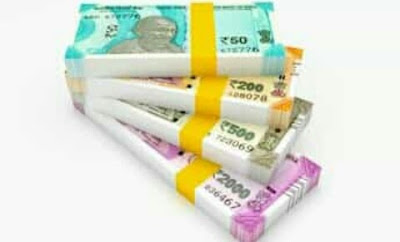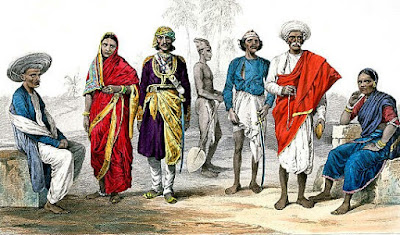| Energy In Technology - Most energy and Power Technology examples with energy Technology factor as energy and Technology hired energy in technology. |
Energy In Technology - Importance of energy is required for all motions and growth in the physical world. Since the earliest days of Civilization human beings have used their own Mushkil powers animal power and fire for meeting the essential energy in technology needs.
The use of tools for production of the food with the necessary accompanying energy as typified by agriculture and hunting brings into sharp focus the essential nature of energy it is said that even in 400 BC oil is used as a lamp fuel in the Greek Islands.
Their use of wind energy for navigation and in the form of wind mills in 3 year old and was prevalent in the different parts of the worlds.
However with the invention of steam engine in the 18th century energy acquired a special significance ushering in the industrial revolution.
Link here :-
Big Buddha Symbol - Statue Found Pak Region.
Energy Technology Impact Factor
The ultimate source of energy -
Till recent times it was thought that energy and matter where quite distance and hence the total quantum of energy in the world was always concerned in spite of conservation of energy from one form to another.
The important physical forms of energy are mechanical potential and kinetic heat radiating light radio it is chemical energy electromagnetic radiation and nuclear.
Sum of the energy conservation are reversible but some others are Irreversible. However the ultimate source of energy in the solar system.
The energy that emanate from the sun in the forms of radiation and is incident on the earth is ultimately responsible for the all different forms in which we find energy in the solar system.
The Solar radiations takes three different forms of the electromagnetic spectrum ultraviolet light and infrared.
The light from the sun is essential for photosynthesis in the green plant which process they ultimately responsible for the existence of all plants and animal life on the earth.
Decide the heat from the sun also provides the climate for the growth of crops and explain the formation of the freshwater on earth in the forms of rain and snow.
All chemical fuels like wood cow dogs and the whole range of the fossil fuel calls oil and natural gases are ultimately derived from plants and animal life that have grown because of the action of the Sun. The human and animal energy also can be ultimately traced to the solar energy.
Link here :-
Electricity - Power Burden Energy Effect Top Tips.
Energy And Power Technology Definition
Different sources of energy
The non commercial sources of energy include human and animal energy.
The primitive sources of fuel energy include would outs etc.
The conventional sources of energy are coal oil natural gas that it is.
These conventional sources are also described as non renewable or exhaustible since all of them are likely to be e depleted in the long run.
Nuclear energy is also sometimes considered a conventional source of the energy but it may as will be included in the list of non conventional and renewable sources of energy which list included solar energy bio energy wind energy tidal energy Ocean energy geothermal energy etc. The term alternate sources of energy is used to cover the renewable sources of energy listed above.
It is worth nothing that bio energy and animal energy have been in use from time immemorial and qualify to be called new and Renewable Sources only in the context of their modern forms.
Energy And Technology
Solar Energy -
The energy from the sun in the forms of solar radiation which is in in reality the basic source of all energy in the solar system has been rediscovered as an important alternate source of energy in the latter half of the 20 century.
Since the world started looking around for new and renewable source in addition to the conventional sources naturally the first such Renewable Sources to attract the attention of the scientist what the solar energy.
It is estimated that nearly 35% of the energy from the sun incident on the atmosphere is reflected back into open space about 18% is absorb by the atmosphere and it user to drive the wine systems.
Nearly 47 % of solar radiation does reaches the earth.
The quantum of energy is so what that in one year the Solar Energy incident on India is equivalent to 120 trillion tons of coal that is more than 20 times the coal Reserve of the world.
It is said that all energy used by any country is less than the sunlight that strikes only its buildings.
This gives an idea of scope for utilisation of solar energy.
The use of solar energy for crying the crops clothes and other products has been known since the ancient times
a even efforts have been made in the remote past to concentrate solar energy through reflector how you are the modern use of solar energy are contemplated in the form of
1) conservation of solar energy into heat to conservation of solar energy directly into electricity
2) bio energy and for conservation of solar energy into other forms by making use of wind waves temperature gradient in the ocean etc.
Solar energy in the form for heat -
By using a blackened sheet of collecting the radiant energy of the Sun and preventing loss of heat from this it due to conduction Convection and radiation the temperature of the sheet can be rise to a maximum of 140 degree Celsius solar collector is a device to insulate the blackened to radiation from such heat loss.
1st floor collector forms part of the various solar energy appliance used as cookers heater Dairy a returner's steam generators and as a desalination device.
Solar cooker of different types are pictured commercially in India.
In fact India became the first country to start commercial manufacture of solar cooker on large scale in 1982.
This Solar water heating system have many applications in domestic and industrial sectors.
Link here :-
Online Gas Booking - Step Registration And Types Gas Cylinder.
Photo voltaic Technology -
The conversion of solar Radiant energy directly into electricity is done using photo voltaic Technology.
The photo voltaic effect of certain solid-state materials is the basic principle applied in the construction of a solar cell.
The first practical solar cell was produced in the USA in 1954, Using a single crystal silicon.
Since then the solar cells have been used mainly in the outer space to provide power for various requirements in satellites.
Solar cell is essentially a semiconductor device which permit generation of voltage when lights fall on it.
The fission of solar cell is defined as the ratio of the electric power output to the amount of solar energy incident on the same most of the photon energy not recovered as electricity is converted into thermal energy in the cell. The life span of the single crystal Silicon device ranges between 15 to 20 years.
Link here :-
Energy And Power Technology Examples
Wind Energy -
Wind energy has been used for thousands of years for year for propelling ships pumping water and grinding grain.
Wind energy conversion takes place ok small wind mills for water pumping are operating in several countries including India.
Wind energy is a high quality from of mechanical energy that can be e converted into electrical energy with minimal energy loss.
The technical journal on wind energy of the UN conference of new and renewable sources of energy at Nairobi in 1981 has pointed out that wind energy has been traditionally cost effective and that recent experiment proved that improved knowledge of wind system should lead to the white scale contribution of energy from the wind.
However there are practical problems particularly regarding the idle period when wind energy is not available for operation.
Ocean Energy -
of the the first for the more promising one of economic excitation.
Atoms at setting up Ocean Thermal Energy conversion plants are one throughout the world.
In India a plant it has been set up in Lakshadweep OTEC plant makes use of the temperature gradient between the surface and the depth.
Apart from electricity it produce by product like food fertilizers Methane aluminium Ammonia liquid hydrogen and fresh water.
Regarding use of waves energy research is containing in several institutions in the world to develop economical device to harness wave energy.
Non commercial scale wave energy unit has been established to fat oven the several problems relating to sea corrosion transmitting the power ashore.
Bio - Energy
This term includes all those processes where biological forms of matter such as plants vegetable bacteria etc provides the basic for energy or it's conversion from one form to another.
Wide use of wind energy bioenergy is the burning of woods plants and Agriculture matter to produce heat .
Vegetable Biomass is a new name of plant organic material where in solar energy trapped and stored through the process of photosynthesis . Biomass includes terrestrial and aquatic matters which are grouped into three categories new plant growth plant reduces and waste.
About 40% of the total energy in technology consumed in India today comes from Woods , wood waste and animal waste. Most dried from of biomass can be burnt directly to produce heat steam or electricity but bio logical convention Technologies Utilising natural anaerobic decay process produce high quality fuels directly from Biomass are Methane from bacterial Fermentation for ethanol from east Fermentation. Thermo chemical conversion Technologist utilise high temperatures and pressures in the absence of oxygen.
.jpg)

.jpg)




